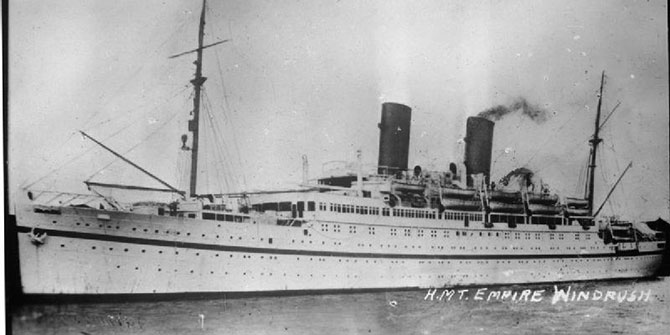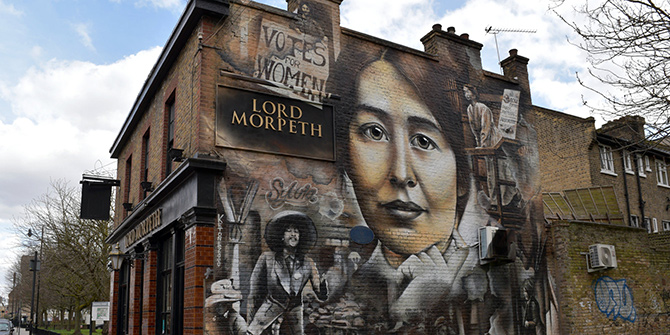As violence flares in South Sudan once again, Naomi Pendle says that the way peace is made or war is fought will either empower or undermine the South Sudanese people.
In Juba on the evening of Monday 11 July 2016, as the previous days of gun battles subsided, South Sudanese firemen came to the streets to collect lorry loads of bodies. They also washed away the blood that coloured the streets, leaving only traces where the blood had seeped into the sandy roads. The specificity of those who had fallen was disregarded. Family members crowded to the hospital to find their own, but they could not even access the bodies to count if their loved ones had died. The hospital had no money for fuel for the generator to power electric lighting to see individual faces among the piles of deceased. There was no refrigeration.
In recent decades, South Sudanese have often been confronted with careless, mass deaths that make life and death seem worthless. As one Dinka chief described to me, “Humans are now like bird poo. They are like waste that falls to the ground and is washed away without a trace. They come to nothing. We die so easily that we are nothing more than bird poo”. The challenge now for the families of those who have just died in Juba is to reclaim their lives and deaths to make life more valuable than “bird poo”. They need to find a way to cool their grieving hearts. The way peace is made or the way war is fought will either empower or undermine the South Sudanese as they attempt to reclaim control over their lives and deaths.

Photo Credit: UN Photo via Flickr (http://bit.ly/2anlXoG) CC BY-NC-ND 2.0
When the fighting erupted outside the Presidential Palace on Friday 8 July, the guns exploding in Juba quickly evoked memories of December 2013. Since then, there have been two and a half years of careful diplomacy and expensive East African hotel bills that culminated in the August 2015 peace agreement. Since fighting subsided in Juba on Monday 11 July, the leaders of the warring parties have affirmed that they believe that the August 2015 peace agreement still has legitimacy. However, key generals and soldiers on either side have long rejected the agreement. Some elites’ objections were based on personal loss of power. Yet, most South Sudanese were also excluded from the negotiations, entrenching their lack of power to determine either the terms of the wars or the peace that they must live under. On Sunday 10 and Monday 11, the soldiers fired guns at each other. Yet, these shots also resisted the notions of the peace that was being imposed upon them. As they fought in Juba, soldiers seemed to clearly demonstrate that the August 2015 peace had failed to peacefully restore human dignity in life and death, and that they were not ready to live under the terms of this peace deal.
Making peace in South Sudan
In their own lifetimes, most South Sudanese have lived through a multiplicity of episodes of war and attempts at peace building that have taken place in different settings at various spatial and political distances from the people.[1] These peace processes, as the wars, reshuffled political alliances and positions creating winners and losers in the architectures of power. Since the 1980s, these agreements have reshuffled power between a circle of now notorious elites. The agreements have often been made behind closed doors in foreign lands based on opaque relationships constructed decades before.
In writing these peace agreements, the parties have also reshaped relationships between the governing elites and the people they claim to govern. The government wars have often left South Sudanese fearful that their lives are worth nothing more than ‘bird poo’. This is as peace agreements have often only reinforced how worthless life is by not prioritising justice or compensation for the dead masses. The peace agreements have rarely even tried to cool the hearts of the grieving. Instead they have shifted power over peace and war into the hands of a few government elites.
In the 2004 peace negotiations between Garang and Kiir in Rumbek, a repetitive warning to Garang was that he should not lose touch with the opinion of the public. The 1999 Wunlit people – to – people peace agreement between western Dinka and Nuer chiefs was partly a success as politicians were confronted with the opinion of the public, as mediated by these chiefs. Yet, even at Wunlit, chiefs did not exchange compensation to help cool hearts and as a way to reimagine meaning in the death.
Where was the August 2015 peace made?
If you step out of the taxi on the busy Addis street, a smartly uniformed doorman directs you through a brief security screening as you enter the multistory, international hotel. It was 2014 and the elites of South Sudan mingled across the polished floor of the hotel lobbies to negotiate the peace that would finally be signed in August 2015 and enacted when Riek Machar and the SPLA-IO troops came to Juba. In the hotel lobby, generals who had been fighting in the swamps just weeks before now lounged on soft chairs sipping large cups of tea. They had left behind soldiers still fighting in the battlefields. When it was time for the daily donor-funded dinner, the politicians and generals ate together from the same bowls of abundant food and sat at adjacent tables. For many South Sudanese it is an affront to basic moral and spiritual dignity to eat with those you are at war with. The warring parties in those Addis hotels did not look like leaders of sides who continued to fight.
During those months in Addis Ababa, lots of the smartly suited men were eager to craft politics and slaved over the details of negotiations. Others knew there were other priorities. One general joked to me that his political leader had just sent him to the negotiations to make sure he was well fed and rested before battle. He did not seem to be active in lobbying or negotiating.
However, just as dangerous as the disagreeing generals was the growing inability for South Sudanese to themselves decide the legitimate terms of peace and justice. By playing with the negotiations in a distant city, the elites and diplomats excluded their citizens from the decisions that would determine the wars and peace that they expected them to support. The negotiations, by their very spatial and political distance from ordinary people, eroded their potential to construct peace and reimagine the consequences of death. They had no space to make life worth more than ‘bird poo’.
If South Sudanese voices were heard at all at the negotiations, they were mediated by civil society that struggled not to be belittled. The mediators in these negotiations had made unprecedented efforts to include civil society, the church and even chiefs in the negotiations, yet the settings of the talks and the final places at the table all empowered the elites. Unlike previous peace agreements, the August agreement mentioned transitional justice mechanisms yet South Sudanese lacked certainty that these would be justly implemented and deliver a justice that would restore the value of the lives that were lost. Many of the warring parties and civil society were aware that the hearts of the public were still hot. They were aware that there was a demand for justice before peace. Yet, the South Sudanese, at their spatial distance from Addis, were easy to ignore. Elites and diplomats, in hotels with polished floors that were fully inaccessible to South Sudanese, could easily reimagine a different South Sudan that was more palatable to their own interests and priorities.
At the time, a short walk away, in a dusty Addis hospital down the road, a prominent leader of the Upper Nile White Armies was receiving medical treatment after a battlefield injury. The White Armies were local defence forces that had been active in militarily supporting the armed opposition. This White Army leader’s heart still burned with anger and a desire to return to the battlefield to seek justice. The public politics of the hotel lobby was at total dissonance from this man’s thoughts, fears and aspirations. He had seen so many die that he wanted to return to fight to do them justice and give their deaths meaning. The peace negotiations appeared to have little connection to the reality of the ever more complex struggles of South Sudanese.
How can we find a South Sudanese peace now?
As the international community and the elites of South Sudan respond to the July 2016 violence, we should honestly ask ourselves whether the peace we construct enables the people of South Sudan to claim sovereignty over life and death, war and peace. Does the peace make sense to the public of South Sudan? Is it inclusive and accessible to the people of South Sudan? Or is it pursued as a quick fix for political gain for South Sudan’s leaders or international political markets? Are we just again enforcing on the South Sudanese a model of statehood that would allow our foreign interests to be restored (whether those interests are oil, security or saving the African)? Are we willing to focus on the specificity of each context and death, and avoid the lazy, endless assumptions of equal culpability between the government and SPLA-IO? Will we preserve space for people to pursue their understandings accountability and justice? Will we count and name the dead and restore their dignity to make sure the lives lost are more valued than bird poo and not just washed away?
This article was first published on the JSRP blog.
Naomi Pendle is a doctoral researcher in LSE’s Department of International Development. She has lived and researched among the western Dinka and Nuer in South Sudan since 2009.
The views expressed in this post are those of the authors and in no way reflect those of the Africa at LSE blog or the London School of Economics and Political Science.
[1] For a discussion of lessons that can be learned from previous peace negotiations in South Sudan see: Rift Valley Institute, We have lived too long to be deceived: South Sudanese discuss the lessons of historic peace agreements, Juba University Lectures 2014.





